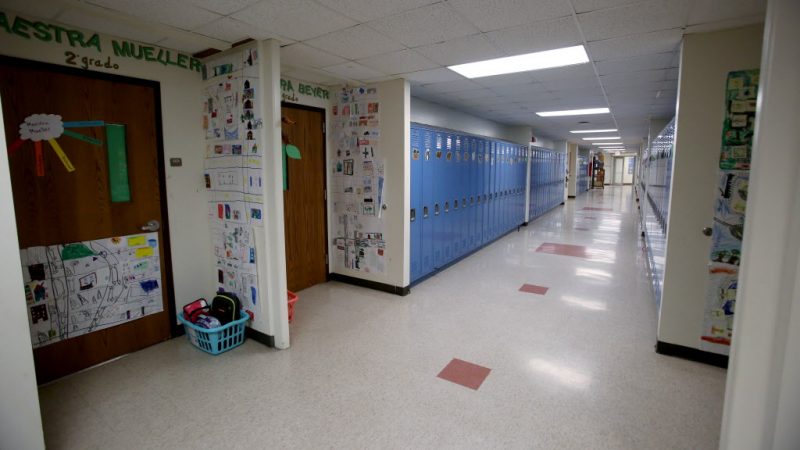Some new guidance from the U.S. Education Department added a wrinkle in the debate over education funding ahead of Gov. Tony Evers’ final deliberations on the budget.
The budget GOP lawmakers produced met one benchmark to qualify Wisconsin for $2.3 billion in federal aid. But citing the new guidance from the Biden administration, Department of Public Instruction officials said it was unclear if the budget would hit a second benchmark that requires states to maintain aid to high-poverty districts.
Complicating matters, it won’t be clear until this spring whether the state meets the second mark. If it falls short, the state could need to pump additional general purpose revenue into K-12 schools to shore up its qualifications for the federal money.
As the Joint Finance Committee deliberated the budget, Evers had knocked the original proposed investment in K-12, in part, because it failed to meet a maintenance of effort requirement in the last two COVID-19 packages to qualify for $2.3 billion in federal aid for K-12. That benchmark required states to maintain how much they put toward K-12 and higher ed as a share of their overall spending. The GOP budget later met that mark after the committee used some of the $4.4 billion in unanticipated revenue growth to put more money into K-12 and tech colleges.
>> WisPolitics is now on the State Affairs network. Get custom keyword notifications, bill tracking and all WisPolitics content. Get the app or access via desktop.
The American Rescue Plan Act that President Biden signed also included a second benchmark requiring states to maintain their support for high-poverty districts. It was noted in a March LFB memo. But the requirement began receiving new attention late last month after the U.S. Department of Education provided additional guidance.
The agency wrote the “maintenance of equity” provisions were designed to ensure schools that serve large proportions of historically underserved groups — including students of color, those from low-income backgrounds and with disabilities — receive an “equitable share” of state and local funds. What’s more, the effort is designed to make sure those schools that serve the highest poverty districts don’t see a decrease in state funding below what they received in 2018-19.
DPI’s Tom McCarthy said the agency, now being led by new Superintendent Jill Underly, is still working through a host of calculations that will go into determining whether the state meets that requirement.
For example, the provision includes a formula that takes into account a community’s poverty based on Census data and district enrollment to determine which districts will be used to determine if the state meets the benchmark. DPI is still working on that calculation.
The benchmark for the highest poverty districts will take into account both general school aids and categorical aids.
DPI last week released its first estimate of what districts will receive through general school aids, and four of the state’s 20 poorest districts are projected to receive less for the 2021-22 school year than they did in 2018-19.
But those numbers won’t be finalized until October.
Meanwhile, categorical aids are paid out in the fall and spring. That means the state can’t determine whether it met the benchmark for the high-poverty districts until spring.
It also remains unclear what the federal government would do if it determined the state failed to meet the maintenance of equity benchmark. The money distributed through the COVID bills is a reimbursement program in which districts spend money on qualified expenses and then receive payment from the federal government to cover the outlay.
During debate on the maintenance of effort requirement, Joint Finance Co-chairs Howard Marklein, R-Spring Green, and Mark Born, R-Beaver Dam, questioned whether the federal government would try to recoup money from school districts if the state fell short of maintenance of effort benchmarks.
Asked about the latest fed guidance, the GOP lawmakers issued a joint statement accusing DPI and Evers of playing politics. They cited DPI’s failure to submit to the feds for final approval a plan to divvy up some of the federal money among districts that Evers signed off on in mid-June “in hopes that the Biden administration will help him move the goalposts once again.”
A DPI spokesman said the agency was waiting until the state budget was finalized to submit the plan and expected to submit it by mid-August.
“It’s sad that Governor Evers is playing politics with this K-12 funding plan,” Born and Marklein said.
See the U.S. Department of Education guidance:
https://oese.ed.gov/files/2021/06/21-0099-MOEq-FAQs.-FINAL.pdf


